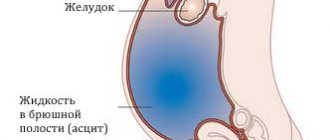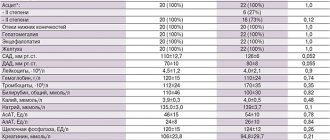Chronic heart failure (CHF) is one of the main health problems in modern society. The disease affects 10 people out of 1000 after 65 years and 10% of the population after 80 years . The condition is typical for older people. It rarely appears at a young age.
The specialists at the Harmony Clinic have extensive experience working with patients diagnosed with heart failure. If you've recently been feeling heaviness and pain in your chest, suffering from loss of energy, shortness of breath and other symptoms of heart disease, make an appointment with a cardiologist. The doctor will conduct a professional examination, refer you for examination and develop an individual therapy regimen for a speedy recovery.
The essence of chronic heart failure
The term is used to describe a condition in which the heart is unable to adequately pump blood throughout the body. The disease forces the organ to work under extreme stress, causing irreparable damage to itself. Partial performance of functions ceases, the efficiency of work is disrupted, up to the complete stop of the organ in particularly critical situations.
CHF makes it impossible for the heart muscle to contract normally and empty its chambers. The myocardium fails when filling the ventricles and atria with blood. This creates an imbalance in systems and provokes a deterioration in well-being. The pathology can begin suddenly due to some important event, for example, a heart attack.
Sometimes chronic heart failure develops slowly. The heart tries to adapt to the overwhelming load, without showing acute signs of the disease for a long time. But then malfunctions appear, for which you should immediately consult a doctor to prescribe effective treatment.
The mechanism of pathology formation
Chronic cardiovascular failure develops slowly due to the body's compensatory mechanisms.
At the compensatory stage of the myocardium, the heart muscle begins to hypertrophy. The vessels expand, causing their walls to become more fragile and permeable over time. Hormones are produced that change the composition of the blood, which becomes more liquid, its volume increases due to increased work of the bone marrow and an increase in the amount of water due to retention.
Compensatory possibilities dry up, and the decompensatory stage begins, which is characterized by a weakening of the functions of the entire cardiovascular system.
As the muscle mass of the myocardium grows, its small vessels lag behind in development, as a result, the heart muscle lacks oxygen and nutrients. Pathological changes occur: the proliferation of connective and sclerotic tissue. The heart becomes unable to pump the increasing volume of blood. Extensive oxygen starvation begins, which covers all organs.
Along with this, the walls of blood vessels become more fragile and permeable. Lymph leaks from the vessels. Swelling begins. These phenomena are especially dangerous in the lungs. They quickly fill with liquid and stretch. A person is tormented by a severe cough, and the discharge of sputum does not provide relief.
Symptoms of chronic heart failure
Characteristic manifestations that may indicate the development of the disease are as follows :
- the heart in the chest beats often, loudly, with anguish. When you feel your pulse, you can count up to 90 beats per minute.
Tachycardia syndrome- Shortness of breath - appears from minimal physical activity (climbing stairs, brisk walking, bending). Along with it, the cyclicity of inhalation and exhalation becomes more frequent. Breathing becomes shallow and superficial.
- Fatigue - even a slight load can cause a feeling of total fatigue, loss of strength, and emptiness. It takes time to recover. This symptom of chronic heart failure is pronounced. A short walk is enough to then sit on a bench for a long time, restoring your strength.
- Dry cough - single coughs can turn into paroxysmal coughs, during which sputum is released. In case of serious disorders, blood streaks may occur in the viscous discharge.
- Swelling of the extremities develops gradually, rising towards the heart. For example, swelling goes from the feet to the hips, from the tips of the arms to the shoulders.
Sometimes shortness of breath becomes asthma-like. In this case, the symptoms of lack of air intensify in a lying position, even if the person is in a state of complete rest. There is a classification of the disease, which is formed depending on the form of heart failure and the severity of its manifestations.
Classification of the disease
In ICD 10, chronic heart failure is coded 150, divided into systolic and diastolic forms. This is not the only division of pathology; there are other bases for classification. One of the most common divisions is by stages :
- Stage I - primary changes, decreased functionality of the left ventricle of the heart. At this moment, there are still no serious disturbances in blood flow, so symptoms of chronic heart failure do not appear.
- Stage II A - blood moves along the bed more slowly and can form areas of stagnation in the pulmonary fields or lower segment of the body.
- II B - hemodynamics suffer, affecting both circles of blood circulation at once. This stage is already characterized by noticeable changes in blood vessels and the heart muscle itself. The doctor can identify signs of the disease by recording extraneous whistling in the lungs and swelling of the lower extremities.
- Stage III - swelling spreads throughout the body. Now they appear not only in the legs, but also become noticeable in the hips and lumbar area. Fluid can accumulate in the peritoneum and spread throughout the body. At this stage, irreversible changes affect vital organs: the brain, heart, bronchopulmonary system, kidneys and liver.
There is a well-known classification by functional units or classes, which is determined by the general well-being of a sick person in response to physical activity. There are 4 stages of chronic heart failure. At the first stage, activity does not cause major changes. Shortness of breath may occur during intense activities, although in many situations there is no shortness of breath.
The second functional class can be determined by normal well-being during the period of rest and increased heartbeat under light loads. When moving to stage 3, the patient experiences significant limitations in physical activity. And at the 4th stage, loads are practically inaccessible, as they cause acute discomfort. Another popular gradation is the division by zones of heart damage. Thus, experts distinguish between left-, right- and two-ventricular heart failure.
Risk factors for chronic heart failure
The causes of the disease are various factors: from serious heart pathologies to poor diet. Let's highlight the main ones :
- ischemic disease, in which the muscle does not receive the oxygen it needs;
- recent heart attack;
- essential hypertension (high blood pressure);
- diabetes mellitus, which doubles the risk of developing chronic heart failure in men and increases the likelihood of developing the disease in women by 5 times;
- dilated cardiomyopathy - a condition in which the heart becomes larger and wider for no known reason;
- heart valve disease, especially aortic stenosis, when blood cannot pass through one of the heart's main valves;
- mitral and aortic regurgitation, when blood can flow in the opposite direction;
- alcoholic cardiomyopathy - large amounts of alcohol makes the heart larger and less efficient;
- inflammation of the heart muscle or myocarditis (usually of viral origin);
- chronic arrhythmia;
- HIV AIDS.
The causes of the disease are also certain types of medications, endocrine diseases, vitamin deficiency, obesity and other conditions.
Age and gender factor
Statistical studies prove the connection between the spread of the disease and the gender and age of the patient.
In the age group up to 65 years, women suffer from congestive heart failure to a lesser extent; above this age, the rates become equal. Death as a result of acute heart failure is recorded in men after 45 years.
In old age, symptoms of congestive heart failure are more common, this is explained by chronic diseases, poor lifestyle, and reduced immunity.
Diagnosis of chronic heart failure
Patients with chronic heart failure are most often evaluated using transthoracic echocardiography. The method allows you to confirm the presence of systolic dysfunction, determine the ejection fraction, and exclude signs of other structural heart diseases (valve stenosis, atrial regurgitation, ventricular septal defect, congenital anomalies).
When an etiology cannot be established and coronary artery disease is suspected, cardiac catheterization is considered so that the physician can determine the anatomy of the coronary artery and evaluate for the presence of obstructive disease. A thorough history and physical examination are mandatory procedures to determine pathology.
Our clinic’s specialists perform a comprehensive diagnosis of chronic heart failure. Doctors study different body systems. A general examination is performed to see how comfortable the person is in terms of their breathing rate and heart rate. This is especially important in a lying position, since with CHF, shortness of breath usually worsens in a horizontal position of the body. The doctor may examine the veins in the patient's neck as they can show how the right side of the heart is working. They can also provide information about whether blood is being pushed out in the veins when the valves are faulty.
After all these manipulations, the cardiologist examines the patient's chest, where sometimes the heart can be seen beating through the chest. By external signs, the doctor is able to determine how large the heart muscle is. Listening will help determine the characteristics of blood flow and valve function. It is important to exclude the risk of developing pulmonary edema. The legs, back and other places are checked for tissue swelling. This fluid accumulates because blood is not pumped efficiently through the heart. This causes a lot of pressure in the veins, which return blood back to the heart, pushing moisture out of the blood vessels and into the tissue.
There are many tests to make a diagnosis. These tests help identify the disease and serve to determine the severity of the disease. The doctor will refer the patient for blood tests to check the general indicators and function of the liver, kidneys, thyroid gland, and also to determine the number of cells in the blood.
Hormonal analysis is useful. The test focuses on two hormones found in the chambers of the heart (ANP and BNP). They are released when the organ expands. The doctor can also check the physical condition by giving the patient small sets of exercises, which he must perform in a specialist’s office.
The patient is sent for functional diagnostics of chronic heart failure, where he will undergo :
- ECG (electrocardiogram) - measures the electrical activity of the heart, the method shows deviations in the functioning of the heart.
- Chest X-ray - taking x-rays to view internal organs and structures.
- Echocardiography is a technology that can provide valuable information about the circulatory system and the functions of the heart valves.
- Coronary angiography - injection of a certain amount of special dye into the veins, further study of the characteristics of blood flow.
- Nuclear cardiology - scanning gamma rays that are caused by intravenous administration of a radionuclide to reveal information about blood flow.
In addition, spirometry may be prescribed - a test to check the functioning of the lungs and the characteristics of the respiratory system. Based on the data obtained, recommendations for the treatment of chronic heart failure and related diseases are being developed. The list of diagnostic procedures is individual for each patient. The need for a particular technique is explained in more detail by the doctor at the first consultation.
Treatment of chronic heart failure
The outlook for the disease depends on the underlying cause of the disease and the severity of the symptoms. The following are used in the treatment of chronic heart failure :
- Lifestyle changes - rational rest, lack of overload, adequate sleep, a healthy diet low in sodium and fat, weight loss, introduction of physical activity.
- Drug therapy - drugs to dilate the walls of blood vessels and support the heart. Among the main drug groups: ACE inhibitors, beta blockers, diuretics, angiotensin receptor blockers
- Surgical operations - coronary artery bypass surgery or angioplasty, installation of internal pacemakers, reconstructive operations, transplantation and much more.
Prevention of chronic heart failure is of paramount importance even after a full course of treatment due to the frequent development of relapses. The goals of the doctors at our clinic are to stop the pathological development of myocardial damage and prevent risk factors that can lead to disability and death. We competently correlate the data obtained as a result of diagnostics in order to develop an effective course of treatment based on them and restore the health of the person who contacts us.
Rate this article
Article rating 4.41 out of 5. Votes: 17.
Latest articles
Sexual transmission of infections
Sexually transmitted infections or STIs are dangerous diseases that can undermine health and lead to dire consequences. Most of the diseases in this group are…
Hormonal disorders
A woman’s well-being largely depends on the endocrine system. Any hormonal imbalance can cause a sharp deterioration in health, weakening the immune system...
Cervical dysplasia
Cervical intraepithelial neoplasia or cervical dysplasia is a precancerous condition expressed by pathological changes in cells. In most...
Sources of development of pathology
The disease occurs due to many reasons:
- due to impaired blood supply to the heart muscle;
- IHD;
- myocardial infarction - due to the scar formed on the damaged area;
- arterial hypertension - loss of contractility of the left stomach is based on increased efforts to pump blood due to spasm of blood vessels;
- arrhythmias - the ejection and filling procedure changes when the heart rate is more than 140 units per minute;
- valve problems.
Toxic or alcohol damage, inflammatory processes in the muscles of the heart also lead to the formation of heart failure. If the exact cause of the disease is not established, then it is classified as idiopathic pathology.
The acute form of the pathology can be provoked by:
- complications of CHF – due to stress, physical activity;
- thromboembolism of the pulmonary arteries;
- acute heart rhythm disturbances;
- hypertensive crisis;
- complex myocarditis;
- impaired blood circulation in the organ;
- aortic dissection, cardiac tamponade.
Sometimes the source of heart failure is bronchial asthma, strokes, and alcoholism. Self-medication with medications, intoxication due to sepsis, pneumonia can also become a trigger for the disease.








